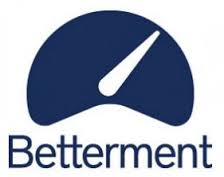The advent of smartphones has spawned a number of apps to help people with personal finance goals, from budgeting to becoming debt-free. Beyond these uses, apps can also help novices gain confidence with investing. Given the wide range of different investing apps available, it’s important to think hard about your particular investment goals and to research the different options to figure out the best choice. Some of the top apps to consider when first getting started in investing include:
-
Stash
 With Stash, you can start investing with just $5. When setting up the account, you fill out a profile that the app then uses to suggest a set of investments. The app can provide guidance on investing for several different goals, from general savings to retirement. You can enable Auto-Stash to make investing fairly mindless or delve deep into the app’s educational materials to develop your knowledge and start making your own, informed decisions. The app arranges exchange-traded funds and other investments into categories that make it easy to find good options. For the first month, Stash has no fees, although thereafter you’ll need to pay $1 monthly for investing accounts and $2 monthly for retirement accounts. Accounts valued more than $5,000 are subject to a flat annual fee of 0.25 percent.
With Stash, you can start investing with just $5. When setting up the account, you fill out a profile that the app then uses to suggest a set of investments. The app can provide guidance on investing for several different goals, from general savings to retirement. You can enable Auto-Stash to make investing fairly mindless or delve deep into the app’s educational materials to develop your knowledge and start making your own, informed decisions. The app arranges exchange-traded funds and other investments into categories that make it easy to find good options. For the first month, Stash has no fees, although thereafter you’ll need to pay $1 monthly for investing accounts and $2 monthly for retirement accounts. Accounts valued more than $5,000 are subject to a flat annual fee of 0.25 percent.
-
Betterment
 If you’re looking for an app that does all the work for you, check out Betterment, which uses both human financial advisors and software to invest users’ money across 13 different funds. Decisions are made based on each user’s profile and take into account goals and risk tolerance. A few of the app’s more helpful features include SmartDeposit, which automatically reroutes excess cash in your bank account to the investment platform; and RetireGuide, which helps create a realistic pathway toward meeting retirement goals. Another interesting feature is the Socially Responsible portfolio, which can help you align your investments with your personal values—for example, by suggesting socially responsible funds. General use of Betterment costs 0.25 percent per year, although a premium account for users with more than $100,000 invested is available for 0.40 percent per year.
If you’re looking for an app that does all the work for you, check out Betterment, which uses both human financial advisors and software to invest users’ money across 13 different funds. Decisions are made based on each user’s profile and take into account goals and risk tolerance. A few of the app’s more helpful features include SmartDeposit, which automatically reroutes excess cash in your bank account to the investment platform; and RetireGuide, which helps create a realistic pathway toward meeting retirement goals. Another interesting feature is the Socially Responsible portfolio, which can help you align your investments with your personal values—for example, by suggesting socially responsible funds. General use of Betterment costs 0.25 percent per year, although a premium account for users with more than $100,000 invested is available for 0.40 percent per year.
-
M1 Finance
 Providing the ability to build a diverse investment portfolio for free, M1 has grown rapidly in popularity. Users pay no commissions and can automate deposits and invest in fractional shares using the app. If you don’t feel comfortable creating your own portfolio at first, you can use one of the app’s premade selections based on your personal preferences. Over time, as you get a feel for investing, you can choose your own investments and diversify as much as you want without having to pay a commission for each new purchase.
Providing the ability to build a diverse investment portfolio for free, M1 has grown rapidly in popularity. Users pay no commissions and can automate deposits and invest in fractional shares using the app. If you don’t feel comfortable creating your own portfolio at first, you can use one of the app’s premade selections based on your personal preferences. Over time, as you get a feel for investing, you can choose your own investments and diversify as much as you want without having to pay a commission for each new purchase.
-
Wealthfront
 Another great option if you’re seeking a more passive investing experience, Wealthfront utilizes software to invest users’ money across 11 different funds. You can take advantage of the signature PassivePlus tool for direct and advanced indexing, as well as automated selling of securities at a loss to offset liability for capital gains taxes. Another tool called Path lets you see a visualized representation of your financial future. In addition, Wealthfront provides access to 529 College Savings Plans, making it a great option for parents. You must deposit a minimum of $500 into the account and can invest for free up to $10,000, after which point the fee is 0.25 percent annually.
Another great option if you’re seeking a more passive investing experience, Wealthfront utilizes software to invest users’ money across 11 different funds. You can take advantage of the signature PassivePlus tool for direct and advanced indexing, as well as automated selling of securities at a loss to offset liability for capital gains taxes. Another tool called Path lets you see a visualized representation of your financial future. In addition, Wealthfront provides access to 529 College Savings Plans, making it a great option for parents. You must deposit a minimum of $500 into the account and can invest for free up to $10,000, after which point the fee is 0.25 percent annually.
-
Acorns
 One of the most popular investing apps for several years now, Acorns embraces microinvesting by rounding up credit and debit transactions automatically and investing the spare change. However, users can choose to contribute more money through one-time transfers, recurring transfers, and the “found money” feature, which “finds” money from Acorns partners when users shop with them. Dr. Harry Markowitz, an economist with a Nobel Prize, helped to develop the different portfolios available to Acorns users. Transferring funds and trading securities on the app involve no fees. Users pay a fee of $1 monthly to use Acorns and an annual flat fee of 0.25 percent if the account grows beyond $5,000. College students can use the app for free up to four years once they register.
One of the most popular investing apps for several years now, Acorns embraces microinvesting by rounding up credit and debit transactions automatically and investing the spare change. However, users can choose to contribute more money through one-time transfers, recurring transfers, and the “found money” feature, which “finds” money from Acorns partners when users shop with them. Dr. Harry Markowitz, an economist with a Nobel Prize, helped to develop the different portfolios available to Acorns users. Transferring funds and trading securities on the app involve no fees. Users pay a fee of $1 monthly to use Acorns and an annual flat fee of 0.25 percent if the account grows beyond $5,000. College students can use the app for free up to four years once they register.
-
Fidelity
 The Fidelity app has a number of benefits, including completely free investing. You’ll find a number of exchange-traded funds that can be invested in without commission fees. You can search through these options to build a balanced portfolio, although this may require some outside investigation and know-how. Thus, Fidelity is the best option for advanced beginners who want to start making their own investing decisions but need an easy-to-use, free app to help in the process. The app also allows you to open an IRA with only a few dollars and continue to invest while paying no maintenance fees. In addition, the app now has two funds with a 0% expense ratio—so you can invest for free, without having to pay management fees or commission.
The Fidelity app has a number of benefits, including completely free investing. You’ll find a number of exchange-traded funds that can be invested in without commission fees. You can search through these options to build a balanced portfolio, although this may require some outside investigation and know-how. Thus, Fidelity is the best option for advanced beginners who want to start making their own investing decisions but need an easy-to-use, free app to help in the process. The app also allows you to open an IRA with only a few dollars and continue to invest while paying no maintenance fees. In addition, the app now has two funds with a 0% expense ratio—so you can invest for free, without having to pay management fees or commission.

